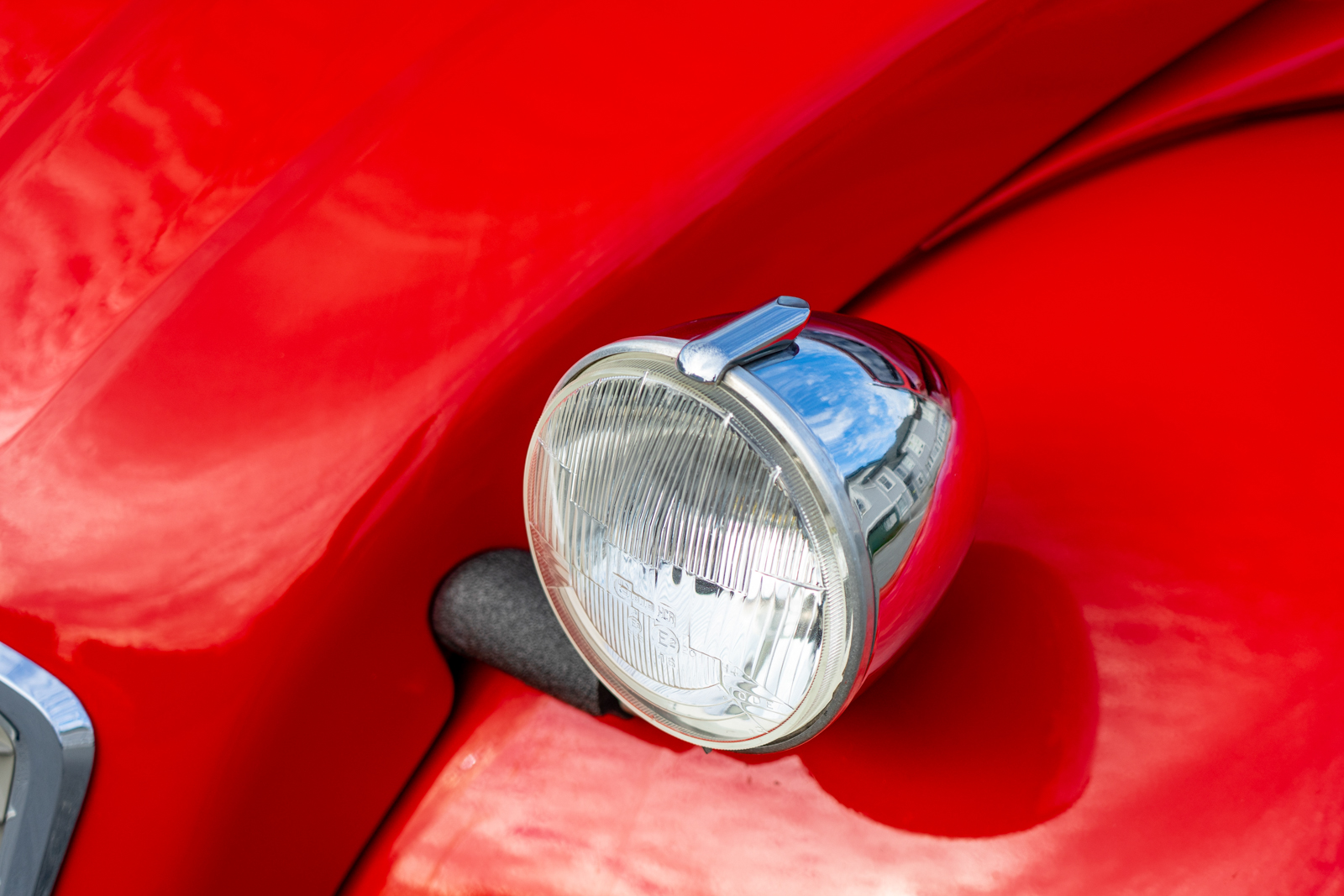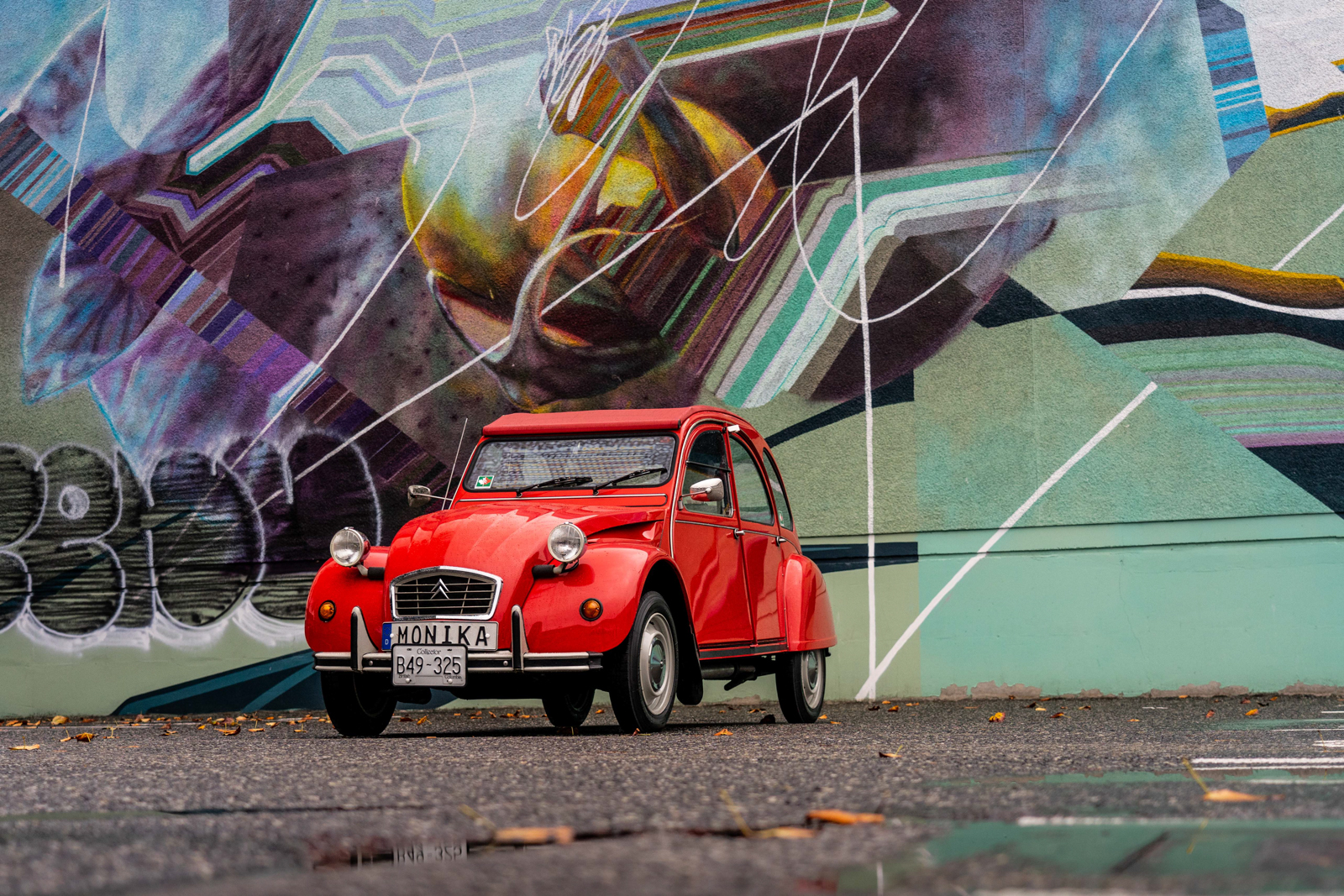Built on the site of a former service station along winding Marine Drive in West Vancouver, Isetta Cafe Bistro has quickly become a hub for fans of all things wheeled. Crowds of spandex-clad cyclists looking for a caffeine fix are expected—Marine Drive is a popular ride on a sunny Saturday. More surprising is a cluster of snail-faced little vintage cars, an unexpected serving of Citroën escargot for brunch.
This happy-faced and delightful little car is the Citroën 2CV, celebrating its 75th birthday this year. Part motorcycle, part tin shed, part tent, and possibly part accordion, the deux chevaux is one of the most beloved forms of transportation ever invented. It was designed for peasants, hidden from invading Nazis, and once driven by James Bond. There is nothing else like it.
To drive a 2CV requires mental preparation. First, clear your calendar, turn off your phone, and throw your smartwatch out the window. There is no room inside this canvas-roofed sardine can for deadlines or hustle culture. This car is the symbol of France, and that means long lunches, plenty of holidays, and taking the time to actually enjoy life.

Open the tinny door and settle into possibly the most comfortable seats you have ever experienced. Murmur a slight prayer as you turn the ignition key and gratefully hear that clattery two-cylinder engine burst into life. Twist and push the shifter forward into first—operating the gearshift feels like opening an umbrella—and set off slowly down the road, softly humming “La Marseillaise” under your breath.
Do not be alarmed at the first corner, around which the 2CV will flop over on its side like a cat in a sunbeam. Ignore all the modern cars whizzing past, with their razor-sharp handling and finely honed suspensions. The 2CV rides softer than runny brie, and it heels over in the turns like an unbalanced rowboat. But it sticks to the road better than you’d expect from those bicycle tires: drive with all the deranged élan of a Parisian in rush-hour traffic, and the little Citroën nips along with a delightful fizz.
The 2CV was originally developed in the 1930s as a secret project called the TPV, which stands for Toute Petite Voiture (very small car). French tire manufacturer Michelin had just taken over a bankrupt Citroën and sought to design a car that would suit the largely rural French population.

While the Volkswagen Beetle was engineered to clip along Germany’s new arrow-straight autobahns at high speed, the 2CV was instead built to drive around in a field. Specifically, the prototypes were created with the brief of carrying a basket of eggs across a plowed field at speed, without breaking a single one.
The TPV needed to be able to carry four people and 50 kg of goods at a steady speed of 50 km per hour, no matter the road conditions. The 50-kg target was set based on farm produce or—and this is very French—the size and weight of a full cask of wine. Citroën’s chief engineer and designer, Pierre-Jules Boulanger, referred to his concept as an “umbrella on wheels.” It would have front-wheel drive for better traction, Citroën already being a pioneer in this technology.

A certain amount of aeronautical influence went into the design of the TPV, and indeed the earliest prototypes were tested by development drivers wearing biplane flying suits and goggles. Just under 50 prototypes were built, with gradual refinements, and Citroën readied the 2CV to launch at the Paris Motor Show in October 1939. Before this could happen, there was some minor unpleasantness with Germany.
Fearing that the Nazi invaders would find a military use for the TPV project, Boulanger hid the prototypes. A forgotten cache of three was found in an attic in 1994. Three years after the end of the Second World War, Citroën finally revealed the 2CV at the 1948 Paris Salon.

2CV, or deux chevaux, is a designation based on taxable horsepower. To encourage low-powered cars suitable for the gasoline-rationed postwar rebuilding years, the French government used a complicated formula involving cylinder count, horsepower, and engine size to come up with a chevaux vapeur, or CV tax rating. The 2CV’s name means two times the lowest rating. They could have called it the Citroën Cheap.
But also cheerful. The original cars made do with just nine horsepower and were mocked in the media at first. Yet the little Citroën worked so well and became so popular that it was adopted as part of the national character of France. The production run lasted 42 years, at the end of which the 2CV’s fan base stretched around the world.

In 1981’s For Your Eyes Only, Roger Moore’s slightly comic Bond eludes pursuit in a pastel-yellow 2CV. The Citroën rolls over but is easily righted and then drives straight down the mountain on its supple suspension, at one point crashing through an olive grove. “Love a drive in the country, don’t you?” quips Bond.
Properly, the Bond Citroën is a 2CV6. Likewise, this red example has the larger 602 cc engine good for 29 horsepower. That’s just a fraction of what’s available in the most-modestly-powered modern cars on sale today, but it is plenty for keeping up with traffic.

The last 2CV was built in 1990, and thanks to enthusiastic owners and marque specialists, there are thousands still on the roads today. As a practical classic, the car is comfortable and easy to drive, while at the same time offering a unique and memorable experience.
And not just from behind the wheel. As the tiny Citroëns zip off along Marine Drive, the face of everyone who sees them lights up with a broad smile. Seventy-five years of spreading joy wherever they are driven. Bonne fête à toi, Citroën 2CV.









